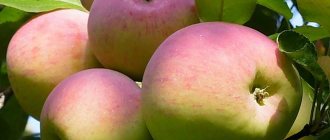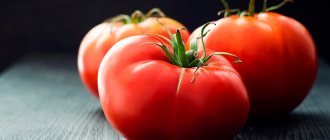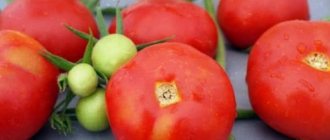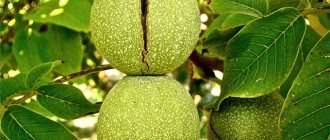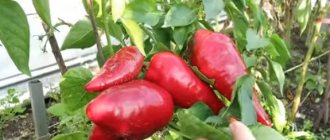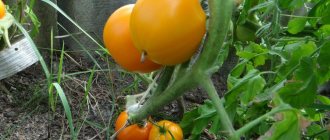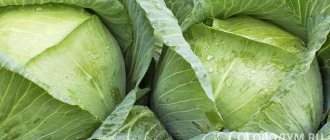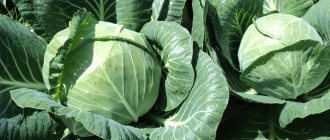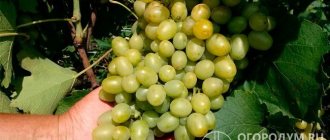Gardening » Apple tree
0
610
Article rating
Kira Stoletova
The Imrus apple tree is a hybrid obtained by crossing Antonovka vulgare with several winter-hardy varieties. The name is an abbreviation of the phrase “Russian immunity”, and the variety itself is popular among gardeners for its valuable qualities.
Apple tree variety Imrus
Description of the tree
The distinctive features of this variety of apple tree are the rough brown-green bark and the rounded shape of the spreading and rather dense crown. Only with age does this green tint disappear.
The trees are standard, and if they are formed from a seed rootstock, they can reach up to 6 m in height. With a dwarf rootstock (that is, obtained from a cutting), the height is less, up to 3 or 4 m.
The branches are elastic and relatively thin. The leaves are oblong with a curled tip, petiolate. The leaves are smooth and green on top, their surface looks wrinkled due to numerous veins. The edges are jagged.
Flowering is early, begins in May. The flowers are small, white and pink, collected in inflorescences of 5 or 6 pieces.
Important characteristics include:
- annual growth (about 10 cm);
- life span of a tree: with a seed rootstock the tree lives up to 80 years, with a clonal rootstock it lives much less.
Fruit
The Imrus apple reaches maturity by the end of September.
The fruits are yellow-green with a blush, medium size, weight from 130 to 180 g, slightly flattened shape. The peel is thin, easily damaged, and somewhat oily to the touch.
The pulp is very juicy, dense, greenish-cream in color, with possible pink inclusions. The structure is fine-grained. The taste is sweet and sour, the aroma is pronounced.
Compound
Apples contain many beneficial substances
Apples contain:
- vitamins (C, A, E, K, B1, B2, B3, B5, B6, B9);
- minerals (iron, copper, zinc, potassium, calcium, magnesium, sodium, phosphorus);
- pectins;
- organic sugars;
- organic acids;
- vegetable protein;
- unsaturated fatty acids;
- tannins;
- essential oils.
Productivity
The first harvest begins in 3-6 years (depending on the type of rootstock). The yield grows year by year (with proper tree care) and ranges from 30 to 100 kg per year.
Winter hardiness
The tree tolerates cold and even snowless winters, as well as early frosts.
Still, it is better to prepare them for winter: cover the trunk circles with a thick layer of humus, wrap the trunks with burlap, and cover the bottom with spruce branches (this is also protection from rodents).
Pollinators
According to the description, Imrus is pollinated by insects, but the apple tree is considered only partially self-fertile and needs pollinators that bloom at the same time (for example, Freshness, Veteran, Kandil Orlovsky, etc.).
Resistance to diseases and pests
The variety is genetically resistant to powdery mildew and scab - common fungal diseases of apple trees that are difficult to control.
However, there is no resistance to other diseases (black cancer, fire blight) and pests (apple sawfly, flower beetle, green aphid). Fortunately, all of the above disasters do not threaten apple trees with proper care.
Pollination
The Imrus apple tree is a partially self-fertile variety, that is, it is capable of forming ovaries after pollination of flowers with its own pollen , which is characterized by an average level of viability (from 28% to 52%).
As a result, from 6 to 17% of fruits are formed. This method of pollination brings a very low yield, so it is better for the tree to have pollinators - apple trees that bloom at the same time.
In this regard, it is recommended to plant the following varieties near Imrus:
- Freshness;
- Kandil Orlovsky;
- Veteran;
- Memory of a warrior.
But until now it has not yet been established exactly which pollinators will be the best for the Imrus apple tree.
Advantages and disadvantages
The Imrus variety will delight you with productivity
The Imrus apple tree variety has the following advantages:
- winter hardiness;
- genetic resistance to scab and powdery mildew;
- high productivity;
- excellent taste of the fruit.
The disadvantages include:
- the need to plant pollinators;
- thin peel (if damaged, the fruits will not be stored for long).
Reviews
Kotova Natalya Dmitrievna. With. Mikhailovka. Altai region . "Hello. I live in the Western Siberian region of Russia in the Altai Territory. Several years ago, our family decided to move from Barnaul to the countryside due to the child’s frequent illness. Having bought a house with a large plot, I immediately planned where we would have a vegetable garden and where the garden would be.
Flowering of a young apple tree of the Imrus variety.
There were no difficulties when planting and harvesting vegetable crops. Things didn’t work out right away for me with garden crops. Having planted 3 different varieties of apple trees, I looked after them for years and waited for the first fruiting.
The first harvest occurred 6 years after planting the crop. We were very upset by the number of apples on the trees. We were not pleased with the taste either. Getting upset, we decided to clear the garden of these plantings and plant berry bushes in this area. A year later, I came across an article about the Imrus apple tree.
Having carefully examined the photo and description of the variety, all the advantages and characteristics of the apple tree, I decided to try growing this crop again.
Because of my first bad experience, I was afraid to purchase several seedlings and bought only one. Having chosen a suitable place, she landed.
The seedling took root without any difficulties. It is unpretentious and does not take much time to care for. At the 4th year our little tree bore fruit. We harvested little, but we were pleased with the taste. The apples are very juicy, tasty, with a predominance of sourness.
The next year the entire tree was strewn with fruits. Thanks to their storage properties, children enjoy eating them fresh for a long time.”
Smirnov. A.S. village of Pirovskoye, Krasnoyarsk region. “I have been gardening for a long time and am a proponent of farming. I grow fruit trees, vegetables, berries, flowers. I also try to involve friends and neighbors in this cause. Since I live in the Krasnoyarsk Territory near the city of Lesosibirsk, climatic conditions cause some difficulties for my hobby. Not all varieties of cultivated trees take root here. It is necessary to choose winter-hardy and unpretentious crops.
I was very pleased with one of these varieties, the Imrus apple tree, which I bought after seeing the description and photo.
It is immune to harsh climatic conditions, is not afraid of various diseases, and bears fruit abundantly. Apples can be stored for quite a long time. And what taste!!! With the onset of autumn, neighbors line up to try the liquid fruits.”
Ulyana. Novosibirsk region. "Hello. In our village, everyone has their own garden and plot. Almost all residents have apple trees and wildflowers. There are more than seven varieties of this tree on our site. So we harvest every year, although not all varieties bear fruit regularly. Through testing with neighbors and in my garden, I discovered that my Imbrus apples are the most delicious.
Juicy, with a sweet and sour taste, they can surprise the most picky guest. And if you pick such an apple from the branch and eat it right away, you get an unforgettable pleasure. I use these apples to make charlotte and pies.
Apples with sourness are in perfect harmony with vegetable salads. You can cook a very tasty compote from dried sour apples. For the winter I make preserves, jams, jams. I also prepare a large amount of pasteurized juice. After a village bathhouse, a glass of cold apple juice can quickly bring you back to your senses.”
Landing Features
Dates and place
Young apple trees are planted in the spring, at the end of April, or in the fall, in late September or October.
In order for the tree to develop well and subsequently bear fruit abundantly, the seedlings need to be placed in a place well lit by the sun and not blown by much wind. In the selected area, groundwater should not come close to the soil surface.
If the soil is acidic, it needs to be adjusted to pH by liming.
Technology
Prepare a hole for planting in advance. Its diameter is about 80 cm, and its depth is at least 60 cm.
At the chosen location, the soil is dug deeply. The top fertile layer is mixed with a bucket of humus, half a bucket of peat and 1 tbsp. nitroammofoski.
Pieces of brick or gravel are placed at the bottom of the hole to ensure good drainage. A layer of soil mixed with fertilizers is poured onto the drainage, a seedling is installed and the roots are covered with the remaining soil.
In its final form, the seedling should be in a shallow hole, and the root collar should be 5-6 cm above the compacted soil.
The soil is covered in layers and each layer is compacted. A peg is also installed in the center of the pit, to which the seedling is tied. Afterwards it is watered generously.
Region of natural growth
In nature, the Imrus variety grows in central Russia. The optimal climate for it is a temperate climate . But thanks to hardening, it feels quite good in colder conditions.
When breeding a variety in conditions of drought and extreme heat, the main measure for its preservation will be regular and abundant watering .
Apple trees belong to a type of tree that absorbs necessary substances from the soil in liquid form.
When the soil dries out and there is insufficient watering, the apple tree may experience an acute lack of necessary substances, which will lead to depletion of the tree.
If the apple tree is planted in extremely harsh conditions, then there is no need to apply special measures to facilitate adaptation.
The Imrus variety is well frost-resistant , and therefore the tree practically does not freeze .
The main thing that will help the apple tree is feeding in the spring . This is how it will be easier for the apple tree to recover after a harsh winter.
Find out more about frost-resistant varieties of apple trees: Calvil snowy, Quinti, Korobovka, Lada, Granny Smith, Gornoaltaiskoe, Uralets, Lyubava, Yantar, Ekrannoe, Chudnoe.
Tree care
Watering and tillage
The soil under the trees must be loosened
The first year the seedling is watered as the top layer of soil dries. In subsequent periods - only in very hot times and during the period of bud formation.
Water in the morning and evening, and not during the sun. Standard: at least 2 buckets of water per day for each tree. Old, spreading trees require up to 10 buckets per day.
The ground under the tree should be periodically loosened and any weeds should be pulled out.
It is also recommended to mulch the soil under the apple tree. This protects it from drying out, and in harsh weather conditions it also protects the root system from hypothermia.
Top dressing
In the spring, usually from the 3rd year after planting, they are fed with complex fertilizer, for example, nitroammophoska. 1 tbsp. Fertilizers are diluted in a bucket of water and applied under one apple tree.
In the fall, feed optionally if the harvest was especially abundant. One tree is fertilized with a mixture: 0.5 kg of wood ash, 1 tbsp. superphosphate and 1 tbsp. potassium salt.
Crown trimming
Pruning is performed annually, even before the buds open, that is, in early spring. This helps to increase the yield and quality of the fruit.
Branches that thicken the crown and interfere with its uniform illumination should be removed. In addition, you need to remove all non-viable (dried, broken) branches.
Protection from diseases and pests
In the spring, the trunks of apple trees up to the point of origin of the lower skeletal branches are certainly whitened with lime - this is an effective protection against many pests and fungal spores.
Also, to protect against codling moth caterpillars, trees are equipped with hunting belts.
It is necessary to regularly inspect apple trees for damage and the presence of pests. If damaged branches or bark are noticed, the lesions are treated with disinfectants. This is the best prevention of the development of black cancer or bacterial burn.
- Regular digging of the soil around trees will protect against the apple sawfly.
- Frequent spraying with an infusion of dandelion or tobacco roots helps against aphids.
- Prevention of pest damage is also considered timely removal of fallen leaves.
Versatility
This variety is universal - it can be grown anywhere and consumed in any form. Apple trees bloom in almost any cold-temperate climate.
Their gastronomic advantages once again confirm the versatility of the variety. Prepared from apples:
- jam;
- compotes;
- jams;
- dried fruits.
Thanks to its great storage potential, Imrus can be eaten raw all winter and last almost until the next ripening season. The description of the variety fully corresponds to the photo of apples - the fruits look firm and have no signs of spoilage from diseases or pests.
Features of ripening and fruiting
Fruiting begins at different ages, depending on the rootstock. With clonal varieties - in the third year, and with seed varieties - in 5 or 6 years. As already emphasized in the description of the variety, the yield increases from year to year.
Imrus is an autumn variety. Apples ripen by the end of September. Some of them fall from the tree spontaneously. Therefore, it is undesirable to postpone harvesting.
Fruiting is annual, but if for several years, with a bountiful harvest, autumn fertilization is neglected, the yield may decrease.
Apple tree "Imrus": varieties
- Columnar
A special position among the early-bearing subspecies of this crop is occupied by a variety with a columnar shape. These trees grow vertically upward and have no side stems. But if they form, they should be removed in the spring using garden pruners. This apple tree is approximately three meters tall, as well as a trunk that is covered with numerous fruits. This variety is valued for the following characteristics: exotic appearance; comfort in care; bountiful harvest.
- Dwarf
Dwarf subspecies are obtained by rootstock to a simple seedling. These subspecies are famous due to the following characteristics:
- - Easy to care for.
- — Early fruiting.
- — Savings on fertilizing.
- — Small size, due to which it is possible to plant more seedlings in the garden.
- Semi-dwarf
These varieties are considered to be those apple trees that cannot exceed a height of two meters. Quite a prolific crop, although with some disadvantages: lifespan is about 10 years; the need for careful care; quite a whimsical culture.
How to collect and preserve the harvest
Fruits must be carefully removed from the tree
It is best to pick apples while they are green. During subsequent storage they turn yellow.
Picked ripe fruits are stored until February. It is not recommended to throw picked fruits; you need to carefully place them in a container for collection.
The fruits are stored in ventilated wooden boxes in a cool, dark room (basement), preferably separately from other vegetables. Neighborhood with apples has a bad effect on the preservation of potatoes: they germinate faster. This occurs from the release of ethylene gas.
The collected fruits tolerate transportation well, if you do not shake or throw the boxes during loading and unloading.
Productivity
The first fruits will begin to form already in the 2nd year after planting the seedling . However, they will appear in small quantities (no more than 10) to try. But in the future, every year the amount of harvest will begin to increase, and at the age of 5 years the tree will begin to fully bear fruit. From this period, one apple tree will be able to produce from 3 to 22 kg of apples annually.
Expert opinion
Yulia Safronenko
Big fan of experiments and personal gardening techniques
Ask a Question
On the tree, the fruits begin to ripen in September (approximately in the second half), and consumer maturity (i.e. after picking the apples) begins in November and lasts until the end of February. The variety is quite fast-growing.
Harvest and storage
As already mentioned, the fruits have a long shelf life (about 4 months), but this is only possible if the harvest is properly harvested and stored.
It is not recommended to delay picking apples , since this variety has a tendency to drop fruits after they ripen. Therefore, when the apples are still colored green, they need to be removed from the tree.
Long-term storage of fruits also ensures their careful harvesting: apples have thin skins that are easily damaged, which is why they can begin to deteriorate very quickly. It is better to fold them in 2-3 layers in wooden boxes (for better storage, each apple can be wrapped in paper), with the stem facing up. This variety should not be placed in plastic bags, as condensation may occur, which will cause the fruit to rot.
Regional characteristics of cultivation
The variety is ideal for regions with a temperate continental climate, for example, the Moscow region.
This is not surprising: it was bred precisely for such climatic conditions. It is recommended to insulate the trunk and root soil in winter.
The same can be said about preparing apple trees for winter in southern Siberia. There is information about their cultivation even in the south of the Krasnoyarsk Territory. The climate in this area is sharply continental, and, in addition to the winter cold, the trees have to endure a hot summer. Watering must be adequate.
In the Leningrad region this variety takes root, but with difficulty, because soils are poor. But enthusiasts still get harvests by artificially enriching the soil.
In Belarus, Imrus has long been zoned in many regions; apple trees grow and bear fruit very well here.
Origin of the variety
“Imrus” was bred by VNIISPK specialists in 1977 by crossing the famous “Antonovka vulgaris” with the hybrid form OR18T13. The authors (E.N. Sedov, Z.M. Serova, V.V. Zhdanov, Yu.I. Khabarov) submitted the resulting variety to State testing in 1989, and in 1996 it was officially included in the Russian Register of Breeding Achievements as approved for industrial cultivation in the Central and Central Black Earth regions.
The variety was created on the basis of the popularly loved “Antonovka ordinary” (pictured
It should be added that “Imrus” is zoned in six regions of Belarus, included in the State Register in 1999 and recommended for cultivation throughout the country. The variety is patented, the rights to distribute it belong to the originator.
Legend
Christmas apple variety
Different types of machines are marked in their own way for quick identification and selection of the one needed for a specific circuit or its section. As a rule, all manufacturers adhere to one mechanism, which allows them to unify products for many industries and regions. Let’s take a closer look at the signs and numbers printed on the machine:
- Brand. Usually the manufacturer's logo is placed at the top of the machine. Almost all of them are stylized in a certain way and have their own corporate color, so choosing a product from your favorite company will not be difficult.
- Indicator window. Shows the current status of contacts. If a malfunction occurs in the machine, then it can be used to determine whether there is voltage in the network.
- Machine type. As already described above, it means a shutdown characteristic at currents significantly exceeding the rated current. C is used more often in everyday life and B is used a little less frequently. The differences between the types of electric machines B and C are not so significant;
- Rated current. Shows the current value that can withstand a long-term load.
- Rated voltage. Very often this indicator has two meanings, written separated by a slash. The first is for a single-phase network, the second is for a three-phase network. As a rule, in Russia a voltage of 220 V is used.
- Switch-off current limit. It means the maximum permissible short circuit current at which the machine will turn off without failure.
- Current limiting class. Expressed in one digit or absent altogether. In the latter case, the class number is considered to be 1. This characteristic means the time for which the short circuit current is limited.
- Scheme. On the machine you can even find a diagram for connecting contacts with their designations. It is almost always located in the upper right part.
Thus, by looking at the front of the machine, you can immediately determine what type of current it is intended for and what it is capable of.
